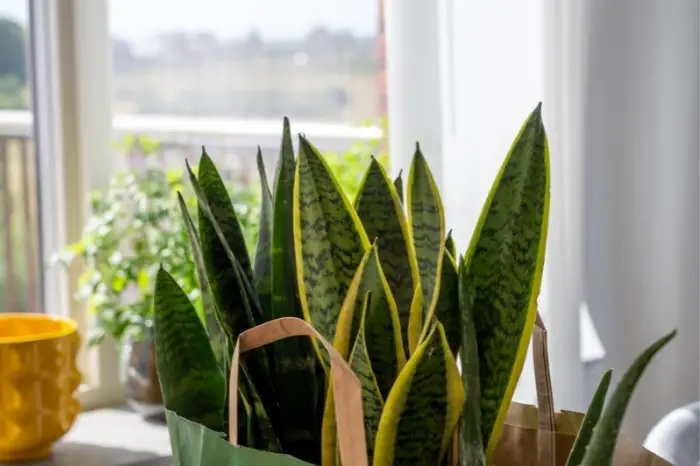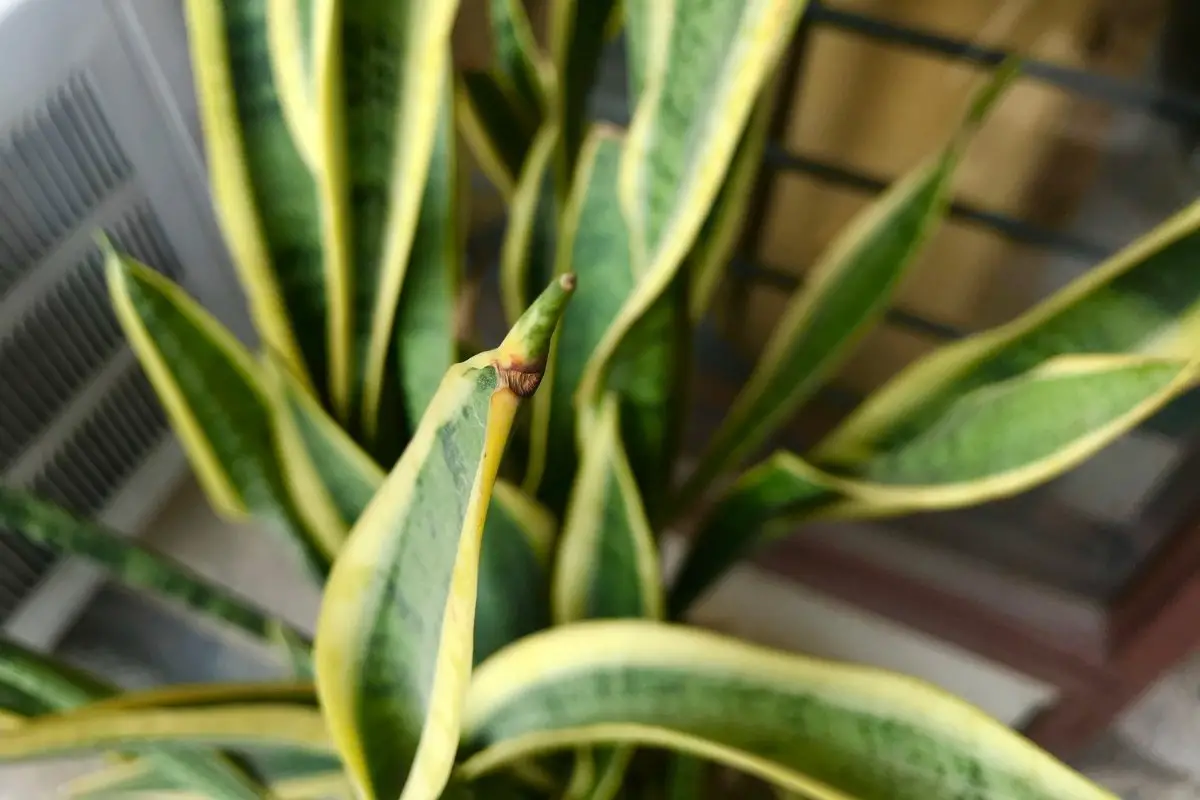Last Updated on September 5, 2022 by Cristina
They’re pretty hardy succulents, but snake plants still need water to stay healthy. Look for signs that your snake plant needs water to prevent it from dehydrating.
Even if you regularly water your plants, the soil and spot they’re in can influence their liquid needs.
In this article, I share why snake plants are great to have, how you’ll know if they need more water, and what you can do to rehydrate a dry snake plant.
3 Reasons To Grow Snake Plants
Snake plants are beautiful and have many benefits for the environment they grow in. If you’ve considered these plants for your living spaces, here’s what you’ll get!
Snake Plants Clean The Air
Your snake plant doubles as a pretty little vacuum. They suck everything up that’s harmful and floating around in the air. It absorbs carbon dioxide and gives you clean oxygen in return!
They remove all the toxins from the air, especially those that can lead to cancer or cause your sinuses to act up.
Snake Plants Are Beginner-Friendly – Signs That Your Snake Plant Needs Water
Snake plants are pretty tough! They won’t die if you miss one watering sesh or expose them to a bit more sunlight than they need.
Even a beginner can keep these plants alive for quite some time. They’re perfect if you are too busy with work or other commitments to constantly check on your plant.
Snake Plants Have Healing Properties
Like Aloe Veras and other popular healing plants, Snake Plants have these powers too. Although you shouldn’t use too much of their sap, you can apply it to wounds for instant relief.
4 Signs That Your Snake Plant Needs Water
Snake plants can go a while without water, but you should still do your best to keep them hydrated. If your plant is dehydrated, you’ll notice some or all of these signs:
Leaf Discoloration
Snake plants have beautiful green leaves that shoot into the air. Yellow leaves could indicate that you’ve given your plant too much water.
If the leaves turn brown, your plant is close to dying. It can be tricky getting it back to a healthy condition once it reaches this stage. Brown leaves are a sign of dehydration.
Growing Speed – Signs That Your Snake Plant Needs Water
Not only are they easy to grow, but snake plants grow pretty fast! If it feels like your plant is taking forever to get to a nice size, there’s something wrong.
That something is most likely linked to a water shortage. If snake plants don’t get enough water, they struggle to keep up and stunt their own growth.
Snake Plant Soil Mix, Specially Formulated for Sansevieria Trifascatia Zeylanica Plants, 2 Quarts
Soil Moistness
Happy snake plants have moist soil. If the soil feels wet, it has too much water. If it feels dry, it’s also a problem.
You should regularly stick your finger into the soil around your snake plant to determine its moisture level. If the soil is dry and crumbly, it’s time to water it.
Leaf Conditions
Brown leaves aren’t the only sign that your snake plant is underwatered. Snake plants have very straight, smooth, and firm leaves. They should resemble snakes standing upright from the ground!
There’s a problem when snake plant leaves start to lose moisture, curl up, or wrinkle. If you touch the leaves, they shouldn’t crumble either.
How To Revive A Dehydrated Snake Plant
If your snake plant looks a little limp, you can take action to revive them! Try these fixes:
Change Your Snake Plant’s Living Conditions
If your snake plant is dehydrated, the cause isn’t always a lack of watering. Many things can lead to poor water retention.
Too much sunlight can make snake plants extra thirsty or even dry the soil around them up before it gets a chance to drink enough. If your soil drains too well, this can also lead to water loss.
You can fix this problem by moving your plant to a spot with indirect sunlight. Watering more often is also an option if you only have sunny areas.
Your pot size could also cause issues. If the pot your plant is in is too small, your plant will suck all the water you give it before you think it’s time to water it again. A large pot can lead to too much water and root rot.

Use Filtered Water
Tap water isn’t as effective in reviving damaged plants. You should buy filtered water if your taps don’t have one. Filtered or purified water will hydrate your snake plant better.
Read more about Aloe Plant With Long Stem: What Does It Mean?
In Ending, Signs That Your Snake Plant Needs Water
Snake plants can go a while without water, but you should still be careful not to dehydrate them. If you leave them in this state for too long, you won’t be able to save your plant. I suggest penning down a regular watering schedule to keep you on track.
I hope you liked this article and found it informative. If you have more questions about caring for snake plants, ask them in the comments!
FAQ’s
How often does a snake plant need watering?
You should water your snake plant once every two weeks, depending on its needs. During the winter, you can reduce this to once a month.
You can water more often if your plant is in a particularly sunny spot. Allow the soil around your snake plant to dry out completely before giving it more water.
What does an overwatered snake plant look like?
Overwatering your snake plant can lead to health issues. Your plant can become droopy and feel soft or heavy. If you squeeze your snake plant leaves, they should feel firm and not squishy.
How long can a snake plant go without water?
Snake plants are pretty resilient and can go about two weeks without water in hot temperatures. During the colder months, you can stretch your watering schedule to 3 - 4 weeks.
How do you rehydrate a snake plant?
If your snake plant is severely dehydrated, you should soak its roots in cool water. This will rejuvenate them and give your plant a fighting chance. Proceed to refill your pot with soil and water your plant regularly.


